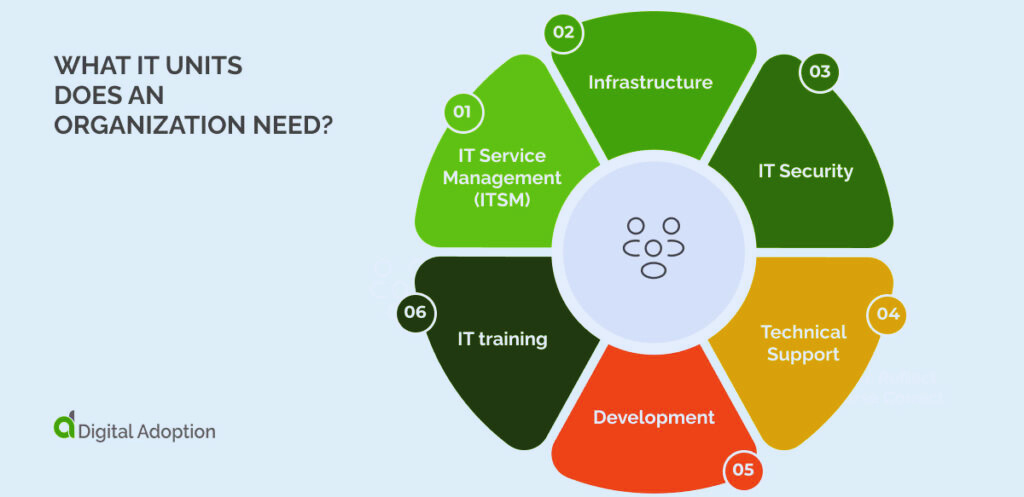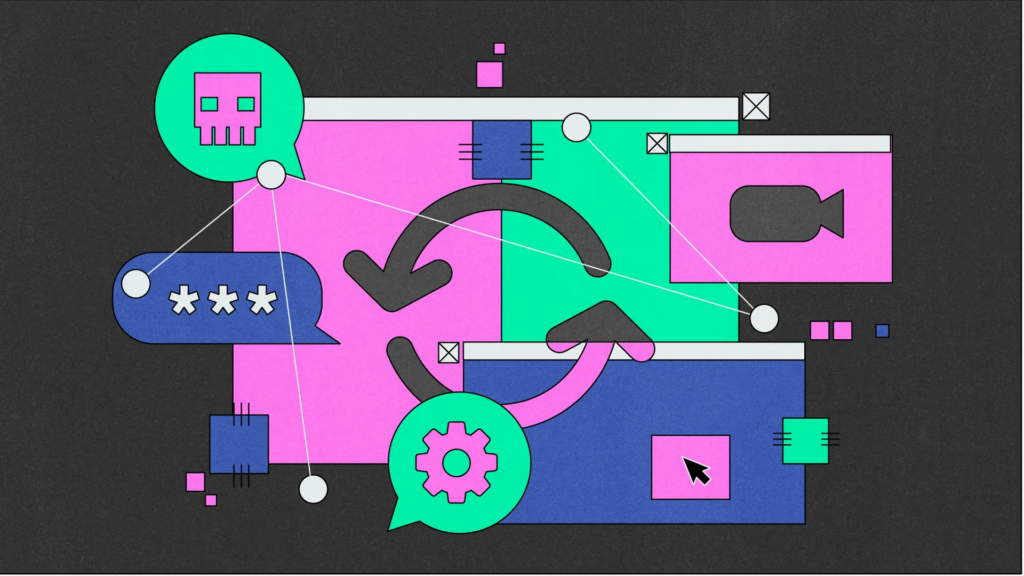Designing an effective IT department structure is crucial for managing technology resources and supporting the needs of an organization. While the specific structure and responsibilities may vary depending on the size and nature of the company, here is a general guide to IT department structure and common responsibilities:
- IT Leadership:
- Chief Information Officer (CIO): The CIO is responsible for overseeing the organization’s overall IT strategy, aligning technology initiatives with business goals, and ensuring the efficient operation of IT systems.
- IT Operations:
- Help Desk/Service Desk: Provides first-line support to end-users, addressing technical issues, troubleshooting, and resolving problems.
- Desktop Support: Assists with hardware and software installation, configuration, and maintenance for end-user devices.
- Network Administration: Manages and maintains the organization’s network infrastructure, including routers, switches, firewalls, and wireless access points.
- Systems Administration: Handles the administration, configuration, and maintenance of servers, operating systems, and associated infrastructure.
- Database Administration: Manages and maintains the organization’s databases, ensuring data integrity, security, and performance.
- Security Operations: Implements and manages security measures, including firewalls, intrusion detection systems, vulnerability assessments, and incident response.
- Data Center Operations: Oversees the physical infrastructure, maintenance, and uptime of data center facilities, including power, cooling, and server racks.
- Software Development:
- Application Development: Develops and maintains custom software applications to meet specific business needs.
- Software Engineering: Designs, codes, tests, and deploys software solutions, following best practices and software development methodologies.
- Quality Assurance (QA): Conducts testing and quality control processes to ensure software meets requirements, functions properly, and is free of defects.
- IT Project Management:
- Project Managers: Plan, execute, and monitor IT projects, coordinating resources, managing timelines, and ensuring successful project delivery.
- Business Analysts: Analyze business requirements, gather user needs, and translate them into functional specifications for IT projects.
- Change Management: Facilitates the smooth transition of new technologies, processes, or system changes, ensuring minimal disruption to operations.
- IT Security and Compliance:
- Information Security: Develops and implements security policies, procedures, and controls to protect the organization’s digital assets.
- Compliance: Ensures IT systems and processes adhere to applicable regulations, industry standards, and internal policies.
- IT Strategy and Governance:
- IT Strategy: Defines the long-term technology roadmap, aligning IT initiatives with business objectives and identifying emerging technologies for competitive advantage.
- Vendor Management: Manages relationships with external technology vendors, negotiates contracts, and evaluates their performance.
- IT Training and Support:
- Training Specialists: Develop and deliver IT training programs to enhance end-users’ technology skills and knowledge.
- Documentation and Knowledge Management: Maintains IT documentation, including user guides, standard operating procedures, and knowledge bases.
Remember, the specific structure and responsibilities can vary depending on the organization’s size, industry, and specific IT needs. It’s essential to adapt the structure to the unique requirements and objectives of your organization.

What Does the IT Department Structure Do? Top 6 Responsibilities
The IT department Structure plays a critical role in managing technology resources and supporting the technology needs of an organization. Here are the top six responsibilities commonly associated with the IT department:
- Infrastructure Management:
- Network Management: The IT department oversees the design, implementation, and maintenance of the organization’s network infrastructure, ensuring connectivity, security, and optimal performance.
- Systems Administration: IT professionals manage and maintain servers, operating systems, and associated infrastructure, ensuring reliability, availability, and scalability.
- Data Center Management: The IT department is responsible for the physical infrastructure of data centers, including power, cooling, and server rack management.
- User Support:
- Help Desk/Service Desk: IT staff provides technical assistance to end-users, addressing issues, troubleshooting problems, and providing solutions.
- Desktop Support: The IT department Structure assists with hardware and software installation, configuration, maintenance, and support for end-user devices.
- Software and Application Management:
- Software Deployment and Maintenance: IT professionals handle the installation, configuration, and updates of software applications across the organization.
- Application Support: They provide support and troubleshooting for software applications used by employees, ensuring smooth operation and resolving issues.
- Data Management and Security:
- Data Backup and Recovery: The IT department implements and manages data backup and recovery processes to protect against data loss and ensure business continuity.
- Data Security and Privacy: IT professionals establish and maintain security measures to protect the organization’s data from unauthorized access, breaches, and cyber threats.
- Identity and Access Management: They control and manage user access to systems, applications, and data, ensuring appropriate permissions and minimizing security risks.
- IT Project Management:
- Project Planning and Execution: IT project managers oversee the planning, implementation, and delivery of technology projects, ensuring they are completed on time, within budget, and meet business requirements.
- Resource Allocation: They allocate IT resources effectively, including personnel, equipment, and budget, to support project needs.
- Technology Strategy and Planning:
- Technology Roadmap: The IT department Structure develops a long-term technology roadmap that aligns with the organization’s goals and identifies technologies that can drive innovation and efficiency.
- IT Budgeting: IT professionals collaborate with stakeholders to plan and manage the IT budget, ensuring resources are allocated appropriately and aligned with strategic objectives.
These responsibilities are not exhaustive and can vary depending on the organization’s size, industry, and specific IT needs. The IT department’s overall objective is to enable the effective and secure use of technology, supporting the organization’s operations, productivity, and growth.
Read More : Cyber safety tips – protect yourself against cyberattacks





